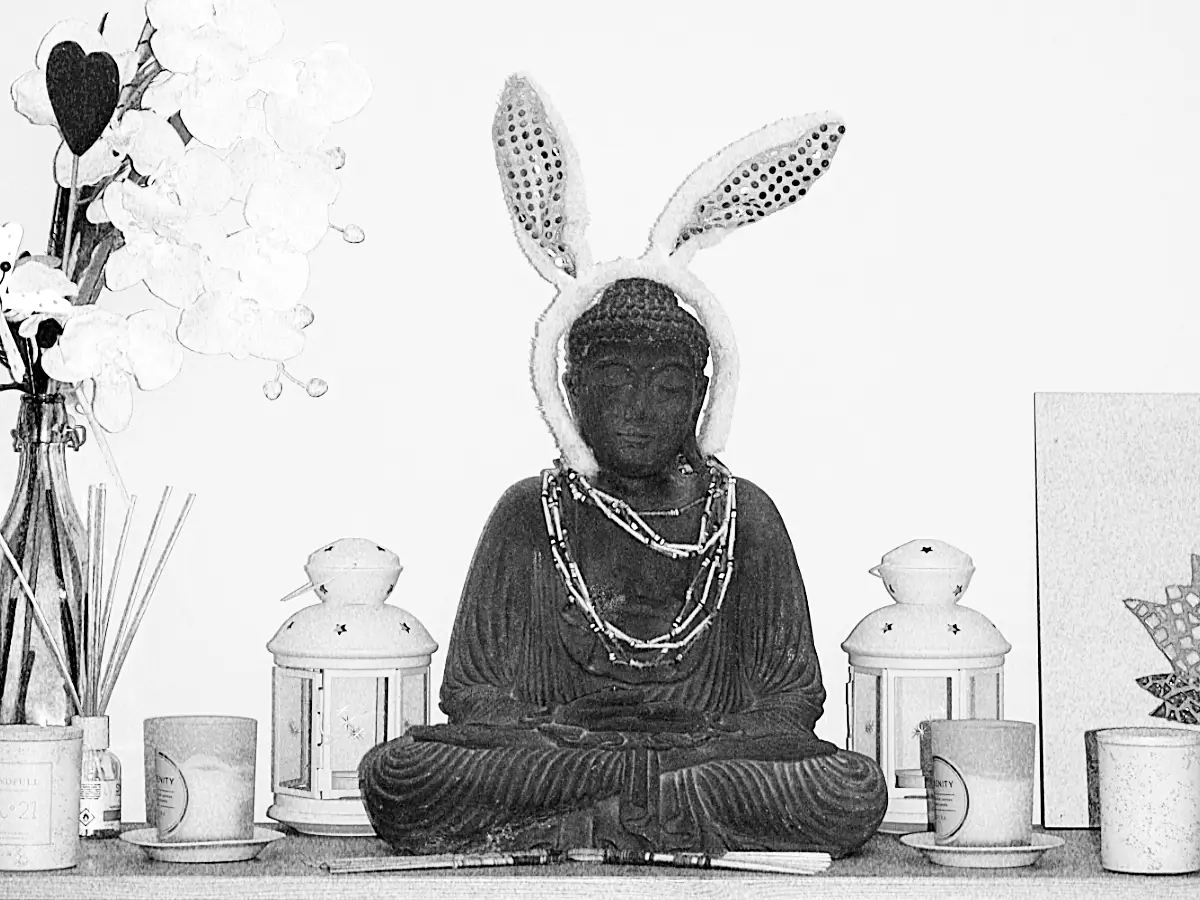no doubt
Be still and give the buddha bunny ears

Reading time...
What do we actually know, what is true, and what do we merely believe we know — while in fact hiding what is directly present? That, in a nutshell, is what this work explores.
The purpose of this work goes back to a saying more than a thousand years old, by the sage Sengts'an in the Hsin-Hsin Ming:
“Do not seek the truth, only cease to cherish opinions.”
Alan Watts put it this way:
“The truth is revealed by removing things that stand in its light — an art not unlike sculpture, in which the artist creates, not by building, but by hacking away.”
There's also a well-known story from the Meiji period (1868–1912) about the Chinese Zen master Nan-in (Nan Huai-Chin). A university professor came to visit him, curious about Zen. Out of courtesy, Nan-in poured him a cup of tea. He poured and kept pouring until the cup overflowed. The professor could no longer restrain himself and exclaimed:
“It's full! No more will go in!”
Nan-in turned to him and said:
“Like this cup, you are full — of your own ideas and speculations. How can I show you Zen unless you first empty your cup?”
One more, then:
In the ninth century, the Buddhist teacher Lin Chi said to a monk:
“If you meet the Buddha on the road, kill him.”
Or — give him bunny ears :-)
No one is in a position to know what it's like to be me.
Or, as author Robert Saltzman puts it:
“Find your own mind.”